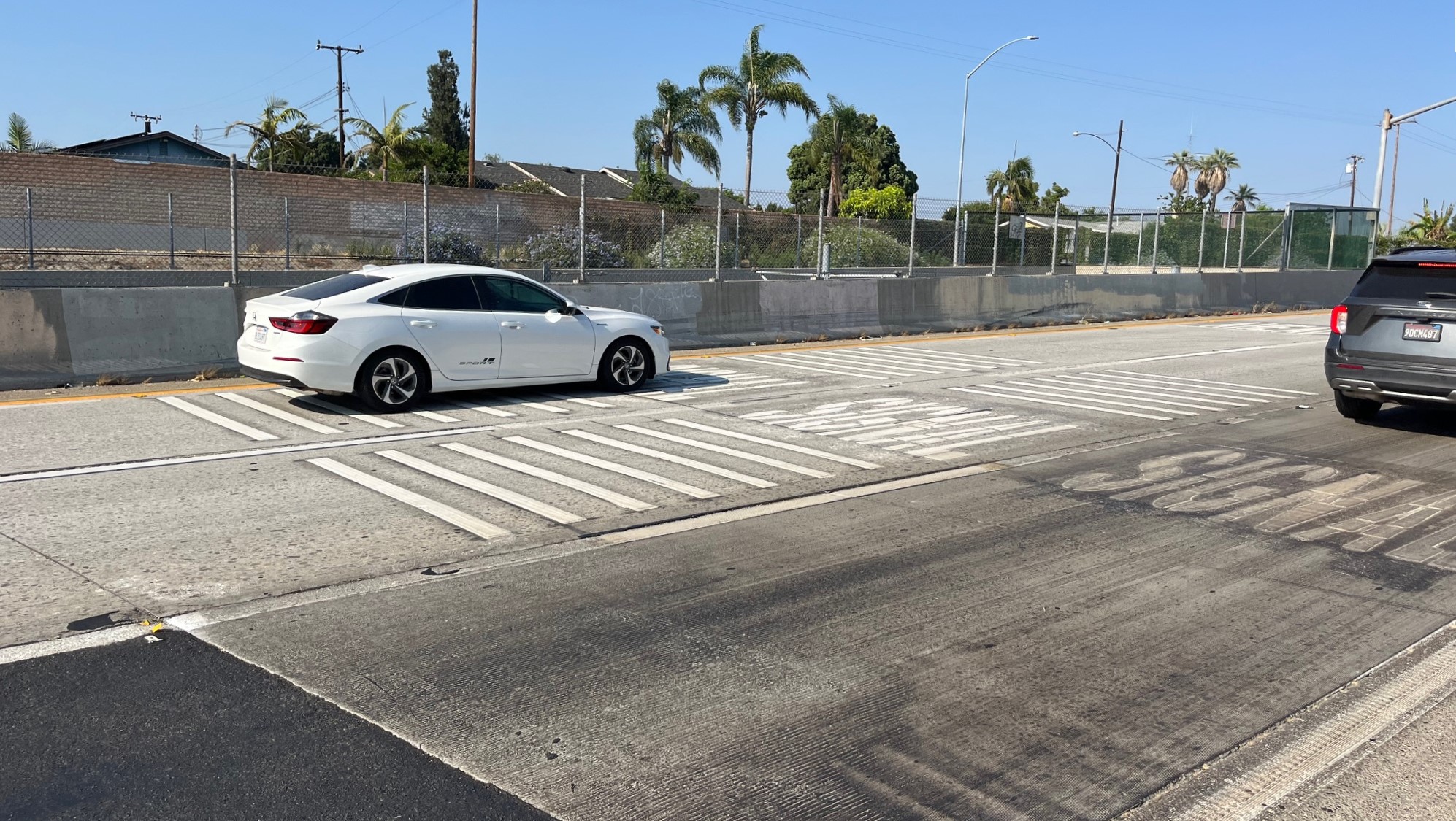 Just a reminder: this is the copy of Bicycling Magazine you're looking for.
Just a reminder: this is the copy of Bicycling Magazine you're looking for.(Editor's note: Dan Koeppel is the writer of the now famous "The Illegal But Highly Effective D.I.Y. Bike Lane" article that appears in the July issue of Bicycling Magazine. You can continue to read his writing at his blog at www.bananabook.org. The following was written as an update to his editor's at Bicycling Magazine.)
Here's an update, both from my perspective and from my contacts at the Department of DIY, a week after the story came out...
The DIY lanes piece appeared a week after the Department of Transportation proposed of course - the two-wheeled denizens of Los Angeles were suddenly turned into human shields - but we were released and sent home with a clear message: The City of Los Angeles now owns a guillotine.
The lane painters at the Department of DIY were as dismayed and outraged by funding fiasco as the rest of the cycling community, but they also felt vindicated. As writer/witness/comrade to the lane painters, I also experienced a feeling of somewhat gratuitous serendipity at the timing of the story. If the actions taken on the Fletcher Bridge weren't' defensible last July, when they actually occurred, they almost certainly became so now.
This week, even that slight "almost" appears to have vanished. On Friday - again, all of this has occurred within a ten day frame surrounding the story's publication - an equally significant event in the annals of Los Angeles cycling occurred. That same Department of Transportation (finally) released its long-awaited draft of a new citywide bike master plan.
Putting aside any comment on whether the budget event and the release of the draft were somehow related to each other - in a bizarre and clumsy attempt to manage expectations and public reaction - I'll limit my comments on the plan to items specifically related to bridges and our story. I'll also assume DOT has learned from its track record of non-implementation, and knows that this plan must happen, though it is certainly not unexpected or unreasonable that many members of our cycling community see no reason to comment on the merits of the plan at all, since they believe the entire system, at this point, is made of applesauce.
On to the bridges.
First: None of the most dangerous bridges - which means the longest, southernmost ones - will see any genuine bike accommodations. Nor will any that lead directly into downtown Los Angeles. The plan marks these bridges with grey dots, which puts them into DOT's "proposed, but currently infeasible" category, "brought forward" from the old, unimplemented plans, which date back to 1996 or before. (Other proposed, but currently infeasible, ideas floating around in the our cultural ether include time travel, universal health care, and a half-wit governor from Alaska becoming president of the United States. A hundred bucks says at least one of these things happens before the Olympic Boulevard bridge gets a bike lane.)
Second come bridges - a couple of them - marked with purple dots. My understanding (and please, if you know better, please correct me) is that this indicates separate-from-cars bike paths underneath and perpendicular to the bridges. These facilities won't actually traverse the spans. Instead, they will be along the river itself, for recreational use, like the current (and wonderful) L.A. River bike path. The exception to this, from my reading, is what appears to be a dedicated bike path running over the North Broadway bridge. If this is the case, it is good news - even though it would mean that the first genuine bike-friendly crossing of the river for cyclists would be the eighth in the south-to-north sequence of twelve bridges, and a full two miles north of downtown.
From a political and implementation standpoint., I'd also note that if there is to be such a Broadway crossing, and if it is going to be part of a great recreational build-out, then it may not represent acknowledgement of what I see - and this is just my personal point of view - as the greater need, which is commuter access from the east side of the river. I'd want to know whether the creation of such a crossing would be viewed with the appropriate level of urgency, and whether it would be built speedily. Given that it would serve a dual purpose, the charge should be pretty simple: BUILD IT FIRST, and BUILD IT FAST. This is something the community must press for.
Third, and most important, when it comes to the Fletcher Drive project - and I apologize for both myself and on behalf the Department of the DIY if this sounds just a little bit like gloating, but hell, let's just call it what it is - there's just one other accommodation for bikes that can be seen as even remotely possible in the DOT plan. The most implementable pathways proposed in the new plan are those that fall into the green dot category. They aren't just run-of-the-mill, painted bike lanes. They're super-cheap run-of-the-mill, painted bike-lanes, specifically defined by the DOT as locations "where a new bike lane can be added without widening the roadway or removing travel lanes or parking."
In other words, they are stripes. Just plain stripes.
There is only one Los Angeles River bridge that gets the green dots. Only one bridge that the brand new Los Angeles bicycle master plan says is perfectly suited for bikes with a simple stripe, with no other modifications, where bikes and cars could co-exist, basically as-is - just a bucket of paint away.
I won't keep you in this phony suspense any longer. It is Fletcher Drive, of course.
What the new plan proposes is exactly what the Department of DIY created - and exactly what the Department of No Department of Transportation said was impossible.





